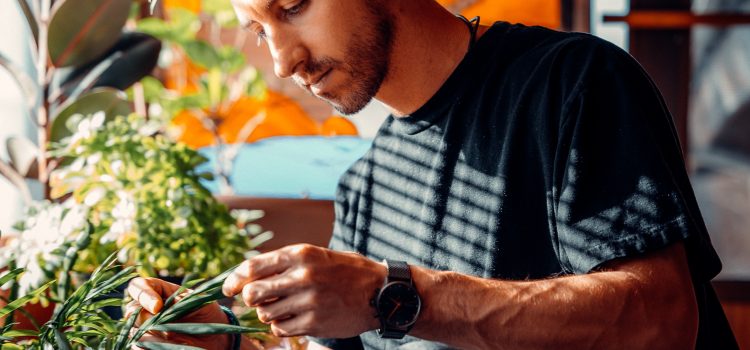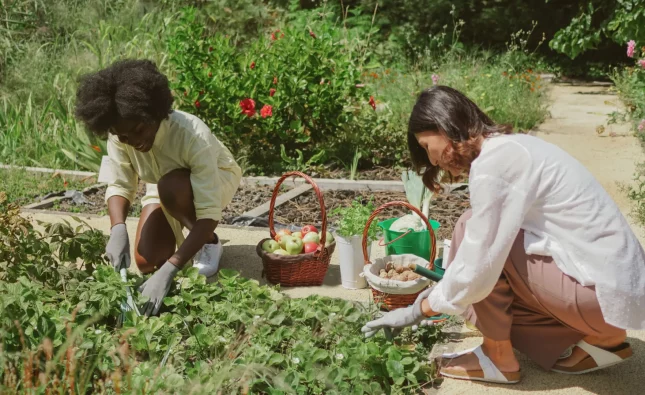
Are you looking to add some greenery to your home but don’t have a yard? Container gardening might just be the solution for you! Whether you’re a seasoned gardener or a newbie, container gardens are an excellent way to flex your green thumb and create a beautiful oasis in even the smallest of spaces. However, keeping your plants healthy and happy requires proper maintenance. In this blog post, we’ll provide essential tips on how to maintain your container garden so that it thrives all year round. Get ready to learn everything from choosing the right containers for your plants, watering and fertilizing them correctly, dealing with pests and diseases, and more!
Container Gardens: The Pros and Cons
Container gardening has become increasingly popular over the years, and it’s not hard to see why. One of its biggest advantages is that it allows you to grow plants even if you don’t have a backyard or garden space. Whether you live in an apartment, condo, or have limited outdoor space, container gardens provide the perfect opportunity to get your hands dirty and enjoy some greenery.
Another advantage of container gardening is its versatility. You can grow almost anything in a container as long as you choose the right size of pot and soil type for each plant type. Container gardens also offer more control over growing conditions such as water intake; this means that plants are less likely to be damaged by pests or diseases.
However, there are also some downsides to consider when it comes to container gardening. For one thing, containers tend to dry out faster than regular garden beds due to their smaller volume of soil; this means they require more frequent watering attention from the gardener.
Moreover, container gardens come with higher maintenance requirements compared with in-ground gardens since they require extra effort such as fertilizing regularly and pruning dead leaves so that your plants stay healthy all year round.
Despite these cons though, we believe that anyone can successfully maintain a beautiful and thriving container garden with proper care and attention!
How to Choose the Right Container for Your Plants
Choosing the right container for your plants is important to ensure their health and growth. There are a few things you need to consider when selecting a container.
First, make sure that the container has drainage holes to allow excess water to escape. If there are no drainage holes, the soil can become waterlogged and cause root rot.
Secondly, consider the material of the container. Terra cotta pots are porous and allow air flow through them which helps prevent overwatering but they can break easily if dropped or exposed to extreme temperatures. Plastic containers are lightweight, durable and retain moisture better than terra cotta pots but don’t offer good airflow like terra cotta does.
Thirdly, think about size in relation to plant needs – it should be proportionate with what you’re planting so there’s enough room for roots without being too cramped or too spacious.
Choose a color that complements your garden space – this will add visual interest and help create an aesthetically pleasing environment for both you and your plants!
Tips for Planting and Watering Your Container Garden
When it comes to planting your container garden, there are a few things you need to keep in mind. First and foremost, choose plants that will thrive in the size of your container and the amount of sunlight they will receive.
Before planting, make sure your container has drainage holes to prevent water from pooling at the bottom and causing root rot. Fill the bottom with a layer of gravel or rocks for additional drainage before adding potting soil.
When placing your plants in their new homes, be mindful of their spacing needs as overcrowding can cause competition for nutrients and hinder growth. Once planted, give them a good watering and monitor soil moisture levels regularly.
When it comes to watering, aim for deep but infrequent watering rather than frequent shallow watering which can lead to waterlogged roots. Consider using self-watering containers or adding mulch on top of the soil surface to retain moisture.
Pay attention to each plant’s individual water requirements as some may require more frequent watering than others. With these tips in mind, you’ll have a thriving container garden in no time!
Tips for Fertilizing and Pruning Your Container Garden
Fertilizing and pruning are crucial aspects of container garden maintenance. Fertilizers provide your plants with the necessary nutrients they need to grow healthy, while pruning helps to maintain their shape and encourages more blooms.
When it comes to fertilizing your container garden, it’s essential to choose the right type of fertilizer for each plant. Some plants require a high amount of nitrogen, phosphorus or potassium, while others may need a balanced formula. Always read the label carefully before applying any fertilizer and follow the recommended dosage.
Pruning is another important task that should not be overlooked in container gardens. Regularly removing dead leaves and branches can help prevent pests and diseases from spreading. It also promotes better air circulation within the pot, which allows your plants to breathe easier.
Make sure you use sharp tools when pruning as blunt ones can damage stems unnecessarily. Start by cutting away any dying or damaged parts first then move on to shaping your plant if needed.
In summary, remember that fertilizing and pruning are both essential tasks for maintaining healthy container gardens. Take care always to choose an appropriate fertilizer formula for each plant species you have in your collection and regularly prune them using sharp tools so as not cause harm but promote growth instead!
Dealing with Pests and Diseases in Your Container Garden
Dealing with Pests and Diseases in Your Container Garden
No matter how much care you give to your container garden, pests and diseases can still find their way into it. But don’t worry! There are ways to deal with them and keep your plants healthy.
First of all, prevention is key. Inspect your plants regularly for any signs of pest infestation or disease. If you spot any issues, take action immediately before they spread.
One natural way to prevent pests is by using companion planting. Certain plants repel insects that may harm other plants while attracting beneficial bugs like ladybugs that eat harmful insects.
If you do encounter a pest problem, try using organic methods first like introducing predators or using homemade insecticidal soap made from dish soap and water.
When it comes to diseases, proper watering techniques can help prevent them from occurring in the first place. Make sure not to overwater as this can lead to root rot which invites fungus and other diseases.
In case a plant does get infected with a disease, remove the affected parts immediately so it doesn’t spread further. You can also use organic treatments such as copper fungicides or neem oil spray.
By being proactive and taking preventative measures against pests and diseases in your container garden, you’ll have happy and healthy plants all season long!
Conclusion
Container gardening is a great way to bring the joys of gardening into small spaces or onto patios and balconies. However, it does require some upkeep to keep your plants healthy and happy. By choosing the right containers for your plants, watering properly, fertilizing regularly, pruning when necessary, and dealing with pests and diseases promptly, you can enjoy a thriving container garden all season long.
Remember that each plant has its own unique needs in terms of sunlight exposure and water requirements. So be sure to research what works best for each type of plant before planting them in your containers. With these essential tips at hand, you will be well on your way to creating a beautiful oasis filled with vibrant plants that are sure to delight both you and anyone who sees them!










